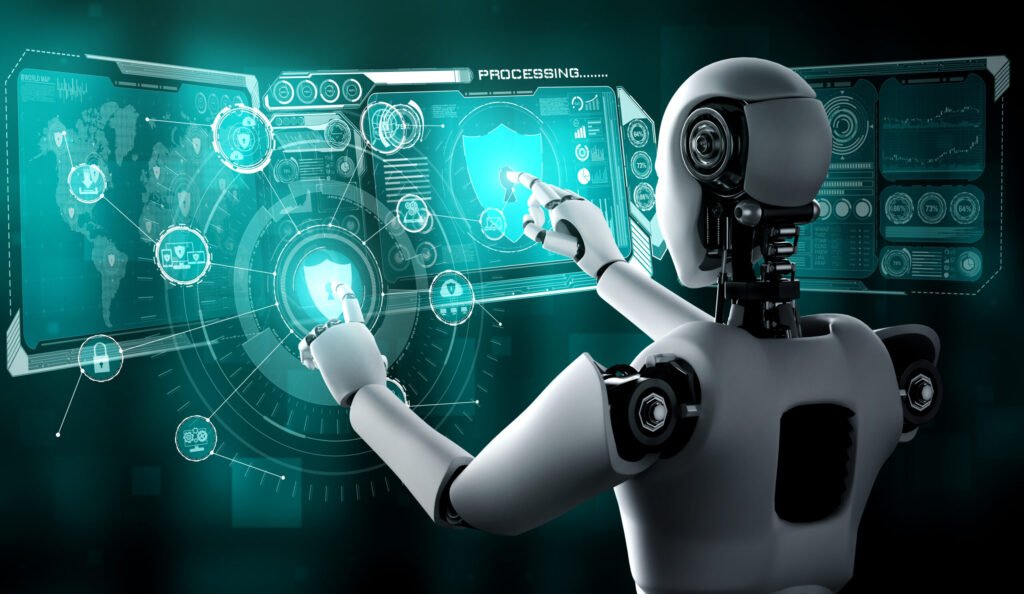Introduction
Artificial Intelligence (AI) is advancing rapidly, especially in creative domains such as writing, music, art, design, filmmaking, and ideation. Tools like ChatGPT, DALL·E, Midjourney, and Sora are enabling machines to generate impressive creative content—once thought to be the exclusive domain of humans.
This explosion in capability raises a pressing question:
Is AI a threat to human creativity?
Or is it, perhaps, a new tool to expand creative horizons?
How AI Enters the Creative Space
AI today can:
- Write poems, novels, and scripts
- Design logos, illustrations, and ads
- Generate musical scores and soundtracks
- Edit videos or generate 3D animations
- Brainstorm business ideas or campaign slogans
These outputs are produced in seconds—sometimes matching or even exceeding what a human might deliver in terms of quality and consistency.
Why Some See AI as a Threat to Creativity
🧠 1. Automation of Imagination
AI can now simulate imaginative thinking, producing unique combinations of ideas, styles, or genres. Critics argue that:
- It could replace artists, writers, and musicians
- The creative process becomes mechanized, losing soul and emotion
- Clients may prefer cheaper, faster AI output over hiring humans
“If a machine can paint a portrait or write a screenplay, what role is left for the artist?”
💼 2. Commodification of Creative Work
With AI able to churn out endless variations:
- Creativity risks becoming mass-produced
- Originality may be drowned in algorithmic sameness
- Humans might stop pushing creative boundaries, relying too much on prompts
⚖️ 3. Intellectual Property Concerns
- AI often “learns” from existing human-made works
- Many artists worry that AI is replicating their style without consent
- Laws are still catching up to define what is original and who owns AI content
The Case for AI as a Creative Partner
✨ 1. AI Augments, Not Replaces
Just like Photoshop didn’t replace artists, AI won’t either—it offers:
- Faster drafts, more iterations
- New visualizations of abstract concepts
- Time-saving tools for creative exploration
A designer can use AI to brainstorm mood boards. A writer can get AI to suggest plot twists. The spark still belongs to the human.
🧠 2. Expands Access to Creativity
AI democratizes creativity:
- Non-artists can generate visuals or music
- Startups with low budgets can still make high-quality content
- It allows people with disabilities or language barriers to express themselves
🔍 3. Inspires New Forms of Art
AI is not just a tool but a collaborator:
- Artists are training models on their own work to create unique AI-human hybrids
- New genres like AI-assisted poetry, generative music, and neural art are emerging
Human Creativity Is Still Unique
Despite AI’s advancements, it lacks:
- Intentionality: It doesn’t create with a purpose or message
- Emotions: It doesn’t feel what it generates
- Cultural context: It doesn’t live through experiences or share values
- Moral judgment: It cannot decide what’s meaningful to humanity
AI mimics creativity. Humans experience and live it.
Conclusion
AI is not a threat to human creativity—it’s a catalyst. Like any tool, it can be misused, but it also opens vast new creative possibilities. The future of creativity lies not in human vs. AI, but in human + AI.
The true danger isn’t AI becoming more creative than humans, but humans stopping being creative because they over-rely on AI.
Let AI inspire you—not replace you.
Create Creatively with TechsterTech
At TechsterTech.com, we help you combine the power of human imagination and AI efficiency to elevate your digital presence. From content generation to smart branding and design, we make technology work for your vision.



